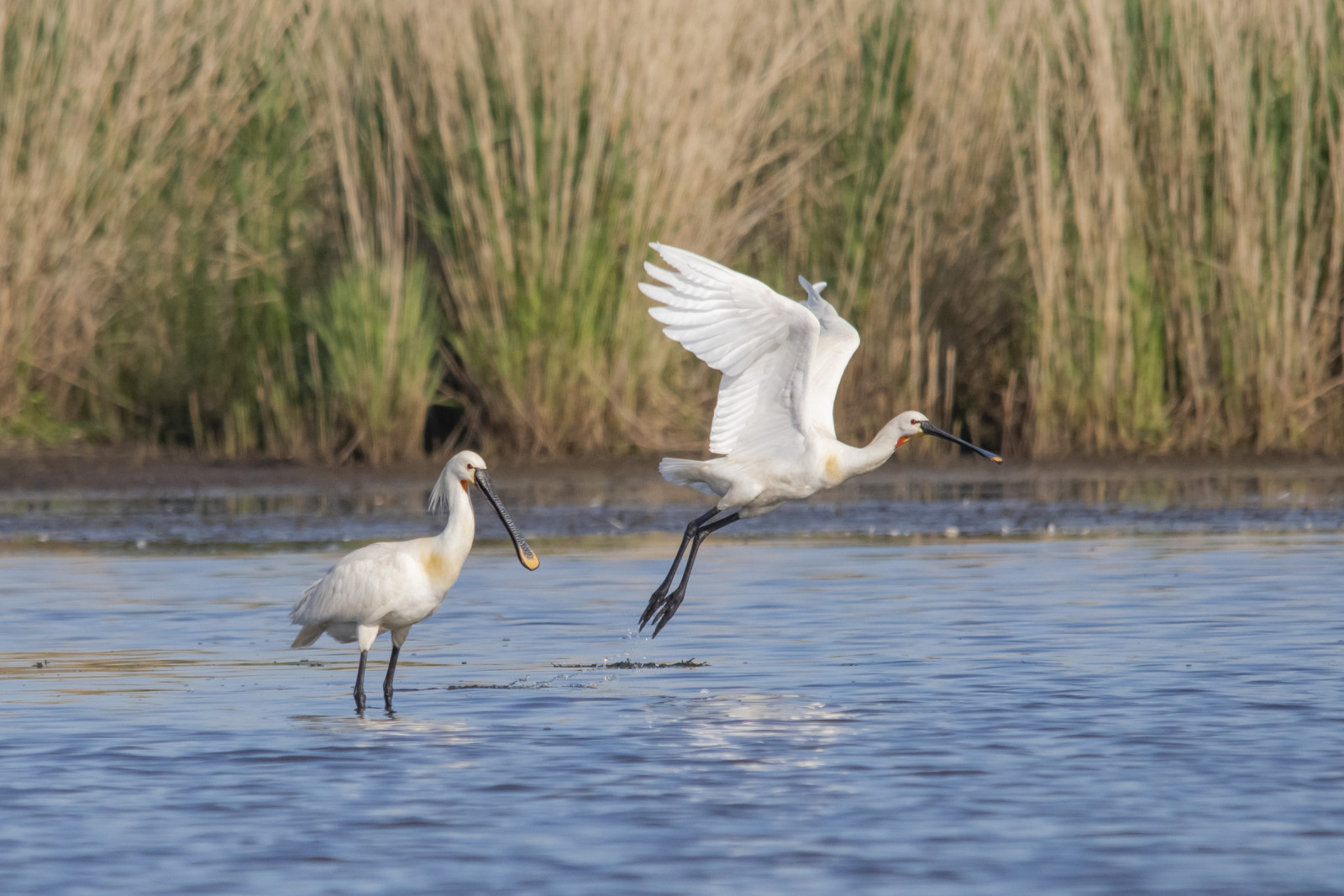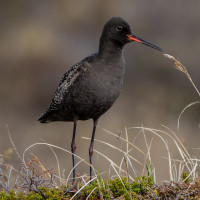Description
There was once 107 hectares of agricultural land near Zevenhoven and the Nieuwkoopse Plassen. Those 107 hectares are still there, but the agricultural land has been transformed into a magnificent nature reserve named the Groene Jonker. A pond, reed fringes and grasslands were created, creating a bird paradise that attracts birdwatchers from far and wide. They are attracted to the many swamp and meadow birds that live there.
Which bird species you see there, depends on the season. Corcodel cu gât negru, Chirighiță neagră, Sitar de mal, Cresteț pestriț and Cresteț mic gave the area its fame. In spring you can see and hear Lăcar de stuf, Gușă vânătă Presură de stuf, Lăcar mic and Cârstel de baltă in the reed collars. The Erete de stuf dances above the reed collars and Lopătar and Egretă mare forage in the shallow water areas. You can also see waders such as Sitar de mal, Fluierar cu picioare roșii, Fluierar de mlaștină and Fluierar de zăvoi. It is one of the best places in The Netherlands to see Piciorong. In winter you can see large groups of Bătăuș, Nagâț, Culic mare and Graur, not to mention the thousands and thousands of Rață fluierătoare that hibernate there. Other ducks you can see are Rață lingurar and Rață sulițar. The Erete vânăt also hunts in the area, as do Șoim călător and Uliu păsărar.
_________________________
Nederlands: In de Groene Jonker zijn het hele jaar door veel vogels te zien. In het voorjaar zie je Lopătar, Gușă vânătă en Nagâț en soms zeldzaamheden. Het is een van de beste plekken in Nederland om Piciorong te zien. Bij Zevenhoven en de Nieuwkoopse Plassen lag ooit 107 hectare landbouwgrond. Die 107 hectare zijn er nog, maar de landbouwgrond is getransformeerd tot een prachtig natuurgebied genaamd de Groene Jonker. Er zijn een vijver, rietkragen en graslanden, waardoor een vogelparadijs is ontstaan dat vogelaars van heinde en verre trekt vanwege de vele moeras- en weidevogels die er leven.
Welke vogelsoorten je er ziet, hangt af van het seizoen. Corcodel cu gât negru, Chirighiță neagră, Sitar de mal, Cresteț pestriț en Cresteț mic gaven het gebied zijn bekendheid. In het voorjaar kun je Lăcar de stuf, Gușă vânătă Presură de stuf, Lăcar mic en Cârstel de baltă in de rietkragen zien en horen. De Erete de stuf danst boven de rietkragen en Lopătar en Egretă mare foerageren in de ondiepe watergebieden. Je kunt ook steltlopers zien zoals Sitar de mal, Fluierar cu picioare roșii, Fluierar de mlaștină en Fluierar de zăvoi. In de winter zie je grote groepen Bătăuș, Nagâț, Culic mare en Graur en niet te vergeten de duizenden en duizenden Rață fluierătoare die er overwinteren. Andere eenden die je kunt zien zijn Rață lingurar en Rață sulițar. De Erete vânăt jaagt ook in het gebied, net als Șoim călător en Uliu păsărar.
Details
Access
You can park here for free: parkingplace de Roerdomp, Hogedijk 2-10, 2435 NC Zevenhoven (ZH). See the P in the map.
_________________________
Nederlands: Je kunt hier gratis parkeren: parkeerplaats de Roerdomp, Hogedijk 2-10, 2435 NC Zevenhoven (ZH). Klik op de P in de kaart voor een routebeschrijving.




